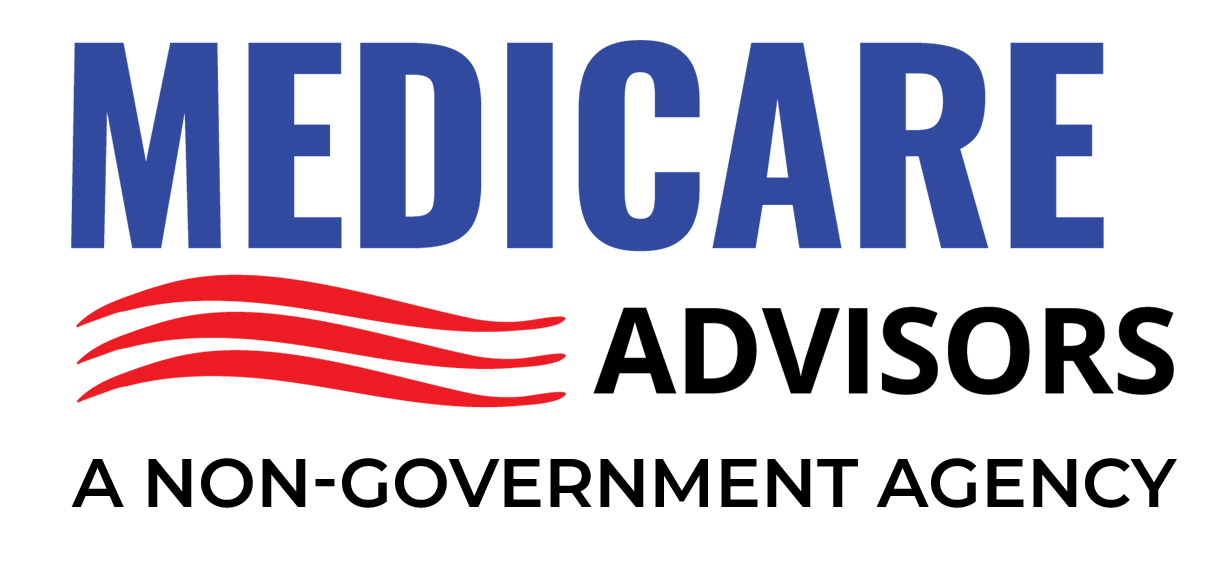Overview of Medicare Supplement (Medigap) Plans
Medicare Supplement Plans (also known as Medigap) are insurance policies offered by private companies to help Medicare beneficiaries cover some of the out-of-pocket costs that Original Medicare (Part A and Part B) does not pay. These supplemental plans can provide relief from expenses such as copayments, coinsurance, and deductibles. For those who rely on Medicare as their primary health insurance, Medigap plans can be a lifesaver in managing unpredictable healthcare bills.
In the United States, the federal government has standardized these plans so that each lettered plan (A, B, C, D, F, G, K, L, M, and N) includes specific benefits. The coverage for each plan is identical across carriers—meaning that if you buy a Plan G from one insurer, you’ll receive the same basic benefits as Plan G from another insurer. The only differences might be the premium cost, reputation of the provider, and a few extra perks that some insurers throw in, such as gym memberships or telehealth services.
Below is a quick summary of Medigap plan naming conventions and coverage:
- Plan A: Basic coverage, offers Part A hospital coinsurance and hospital costs.
- Plan B: Offers everything in Plan A plus the Medicare Part A deductible.
- Plan C: (No longer available to new beneficiaries if you became eligible for Medicare on or after Jan 1, 2020) but covers nearly all out-of-pocket Medicare costs, except for any Part B excess charges.
- Plan D: Includes many of the same benefits as Plan C but not Part B deductible coverage.
- Plan F: (Also no longer available to new beneficiaries if you became eligible for Medicare on or after Jan 1, 2020) covers all Medicare-approved costs, including Part B deductible.
- Plan G: Often considered one of the most comprehensive currently available plans. It covers everything that Plan F used to, except the Part B deductible.
- Plan K and L: Have lower premiums but higher cost-sharing.
- Plan M: Similar to Plan D but covers only 50% of the Part A deductible.
- Plan N: Another popular plan that offers lower premiums in exchange for cost sharing in the form of copays and potential Part B excess charges.
In this comprehensive guide, we’ll focus on Plan N vs Plan G—two of the most widely chosen Medigap options. We’ll examine their key differences, coverage details, potential drawbacks, real-life experiences, and commonly asked questions so you can make the best decision for your health and finances.
Find Medicare Plans in 3 Easy Steps
We can help get up to $0 monthly premium Medicare plans
What Is Medicare Plan N?
Medicare Plan N is often considered a cost-effective alternative to some of the more robust Medigap plans. It provides the same basic benefits as other Supplement Plans but comes with a few additional out-of-pocket costs. For instance, you may be responsible for copays when visiting the doctor or the emergency room. Let’s take a closer look:
Plan N Coverage
- Medicare Part A Coinsurance and Hospital Costs
- Covers up to an additional 365 days after Medicare benefits are used up.
- Medicare Part B Coinsurance
- You pay small copays (often up to $20 for some doctor’s visits and $50 for emergency room visits if you’re not admitted).
- Blood (First 3 Pints)
- 100% covered.
- Part A Hospice Care Coinsurance or Copayment
- 100% covered.
- Skilled Nursing Facility Coinsurance
- 100% covered after Medicare’s coverage runs out.
- Medicare Part A Deductible
- 100% covered.
- Medicare Part B Deductible
- Not covered by Plan N.
- Medicare Part B Excess Charges
- Generally not covered, meaning if your provider charges more than the Medicare-approved amount (up to 15% more), you’re responsible for that difference.
Cost Structure of Plan N
- Monthly Premium: Typically lower than Plan G.
- Copays: Up to $20 for doctor’s visits and $50 for ER (if you’re not admitted).
- Part B Excess Charges: Not covered, which can occasionally lead to higher bills if you see providers who do not accept Medicare assignment.
- Part B Deductible: You pay this out of pocket (the same scenario with Plan G, you also pay it out of pocket).
Why Some People Choose Plan N
- Affordability: Plan N generally offers lower monthly premiums.
- Good Coverage: Apart from a few copays and possible excess charges, you’re well-protected from big hospital costs.
- Healthy and Infrequent Doctor Visits: If you don’t see the doctor too often, your copays might be minimal and might offset the lower premium.
“As Henry Beltran, the owner of Medicare Advisors, says: I often recommend Plan N to clients who are healthy, cost-conscious, and comfortable with occasional copays.”
What Is Medicare Plan G?
Medicare Plan G is widely considered one of the most comprehensive Medicare Supplement plans available to new beneficiaries. It covers nearly every out-of-pocket expense that comes with Original Medicare, excluding the Part B deductible.
Plan G Coverage
- Medicare Part A Coinsurance and Hospital Costs
- Covers up to 365 days after Medicare benefits are exhausted.
- Medicare Part B Coinsurance or Copayment
- 100% coverage, meaning you usually pay nothing for doctor’s services after your Part B deductible is met.
- Blood (First 3 Pints)
- 100% covered.
- Part A Hospice Care Coinsurance or Copayment
- 100% covered.
- Skilled Nursing Facility Coinsurance
- 100% covered.
- Medicare Part A Deductible
- 100% covered.
- Medicare Part B Deductible
- Not covered, but once you pay it, Plan G covers the rest.
- Medicare Part B Excess Charges
- 100% covered, meaning you’re protected if a provider charges more than the Medicare-approved amount.
Cost Structure of Plan G
- Monthly Premium: Tends to be higher than Plan N but lower than some older (now unavailable to new beneficiaries) plans like Plan F.
- Part B Deductible: You pay the standard Part B deductible out of pocket each year (this amount can change annually; in 2025 it might differ from 2024).
- No Copays: After you meet the Part B deductible, there are no additional copays for covered services.
- No Excess Charges: Covered in full, giving you additional peace of mind if your provider charges more than the Medicare-approved amount.
Why Some People Choose Plan G
- Comprehensive Coverage: You only pay the Part B deductible, and then nearly all other costs are covered.
- Convenience: No need to pay copays each time you see a doctor or a specialist.
- Travel Benefits: Many Plan G policies offer coverage for foreign travel emergencies (up to plan limits).
“As Henry Beltran, the owner of Medicare Advisors, shares: Plan G is a top choice for folks who want simplicity. Once you meet that Part B deductible, you’re done worrying about extra costs.”
Comparing Medicare Plan N vs Plan G
Both plans offer robust coverage. However, their differences are key to deciding which plan aligns with your personal needs:
Coverage Similarities
- Hospital Stays: Both cover Medicare Part A deductible and hospital coinsurance costs.
- Skilled Nursing: Both plans cover skilled nursing facility coinsurance.
- Hospice: Both cover hospice care coinsurance or copayment in full.
- Blood: Both pay for the first 3 pints of blood each year.
- Foreign Travel: Both typically offer some coverage for emergency care abroad (up to plan limits).
Coverage Differences
- Copays: Plan N requires copays (up to $20 for a doctor’s visit, $50 for emergency room visits if not admitted). Plan G does not require copays.
- Excess Charges: Plan N does not cover Part B excess charges. Plan G covers them fully.
- Monthly Premium: Plan N’s premium is usually lower than Plan G’s.
- Part B Deductible: Neither Plan N nor Plan G covers the Part B deductible, but how you pay for that cost throughout the year may feel more seamless with Plan G (no additional copays after the deductible). Meanwhile, with Plan N, you pay the deductible plus potential copays, and if you encounter a provider with excess charges, that cost is out-of-pocket.
Find Medicare Plans in 3 Easy Steps
We can help get up to $0 monthly premium Medicare plans
Who Typically Chooses Plan N vs Plan G?
- Plan N: Good for healthier individuals who do not frequently visit doctors, value lower monthly premiums, and are comfortable with paying some small copays and the risk of excess charges.
- Plan G: Ideal for those who want more predictable costs, frequent doctor visits, or want the security of having their Part B excess charges covered.
Potential Financial Example to illustrate, here’s a hypothetical scenario comparing yearly costs:
- Plan N:
- Annual Premium: $1,200 (example)
- Part B Deductible: $226 (example for 2023, but it can vary by year)
- Copays: $20 copay x 10 visits = $200
- Potential Excess Charge: $0–$100 (depending on providers)
- Total: $1,626–$1,726
- Plan G:
- Annual Premium: $1,500 (example)
- Part B Deductible: $226
- Copays: $0
- Excess Charges: $0 (covered)
- Total: $1,726
In this simplified illustration, the costs might be fairly comparable. If you rarely see a doctor, Plan N could end up cheaper overall. But if you see specialists often and some charge excess fees, Plan G might save you money.
People Are Always Asking
Many people are always asking, “Which plan is best for me or my spouse?”
The short answer: It depends. You have to weigh out-of-pocket costs, premium amounts, lifestyle, and how frequently you use healthcare services. Some folks prefer the peace of mind that Plan G offers—higher premium, but fewer surprise bills. Others enjoy the lower monthly cost of Plan N, accepting a bit more cost-sharing.
One of the biggest factors is how you feel about Part B excess charges. Are you confident your healthcare providers accept Medicare assignment? If yes, Plan N may be the more cost-effective choice. If you’re uncertain or prefer not to worry about it at all, you may lean toward Plan G.
Potential Drawbacks of Each Plan
Even though Plan G and Plan N are widely popular, neither is perfect for every person.
Drawbacks of Plan N
- Part B Excess Charges: Not covered. If your doctor charges more than the Medicare-approved rate, you might be hit with these extra costs.
- Copays: You’ll face small copays each time you visit a doctor or the ER. If you see specialists frequently, these costs add up.
- Part B Deductible: Still comes out of your pocket.
- Confusion Over Copays: Some folks forget about the copays and get surprised by the bill.
Drawbacks of Plan G
- Higher Premium: Premiums tend to be higher than Plan N, which can be challenging for those on a fixed income.
- Part B Deductible: While small, it’s still out-of-pocket.
- No Copays: Although usually seen as a benefit, it can mean you’re paying a higher premium for coverage you might not use often.
As Henry Beltran advises: “If you’re comfortable with a bit of cost-sharing, Plan N might be your friend. But if you want that extra layer of coverage, Plan G’s your best bet.”
Factors to Consider Before Choosing a Plan
Because both are so similar yet differ in a few key areas, ask yourself the following:
- Do You Visit Doctors Frequently?
- Frequent visits could increase your copay costs under Plan N.
- Are Excess Charges Likely in Your Area?
- Some states limit or ban excess charges altogether (like Connecticut, Massachusetts, Minnesota, New York, Ohio, Pennsylvania, Rhode Island, and Vermont). In these states, Plan N’s risk of paying excess charges is virtually nonexistent.
- Do You Travel?
- Both Plans offer foreign travel coverage, but confirm your plan’s specifics.
- What Can You Afford Monthly?
- Is a higher premium feasible for you, or do you prefer paying less each month and risking occasional extra charges?
- Provider Acceptance
- Check if your physicians accept Medicare assignment. That alone might quell your concern about excess charges.
Common Mistakes When Choosing a Medigap Plan
- Focusing Only on Premium: Some individuals pick the cheapest premium without considering copays or excess charges that might cost them more in the long run.
- Ignoring Plan Renewal Increases: Premiums can go up. Plan G might be more stable in certain areas, but it’s always wise to check historical rate trends.
- Assuming All Doctors Accept Medicare Assignment: Not every doctor does, so ask your providers if they “accept assignment.”
- Misreading the Copay Amount: Some folks think copays are minimal or nonexistent, only to be surprised by them later.
- Forgetting About Travel Coverage: If you travel abroad frequently, ensure you understand how your plan covers you in other countries.
A Quick Glance: Plan N vs Plan G
Here’s a handy bullet list to keep the main differences in mind:
- Plan N
- Lower monthly premiums
- $20 doctor copay and $50 ER copay (if not admitted)
- Part B excess charges not covered
- Still pay Part B deductible
- Plan G
- Higher monthly premiums
- No doctor or ER copays after Part B deductible
- Part B excess charges covered in full
- Still pay Part B deductible
Find Medicare Plans in 3 Easy Steps
We can help get up to $0 monthly premium Medicare plans
Reviews From Real Beneficiaries
David, 67, Texas
“I picked Plan N because I’m healthy, and my doctors take Medicare assignment. I pay a small premium and don’t mind the copays. I seldom see the doctor anyway.”
Margaret, 71, Florida
“I ended up with Plan G for total peace of mind. I see my specialist monthly, and I didn’t want random copays or surprise fees. The premium is a bit high, but it’s worth it for me.”
John, 68, California
“I first tried Plan N, but I realized my specialist was charging Part B excess charges. That’s why I switched to Plan G. Now I have no unexpected bills.”
Miranda, 70, New York
“In New York, there are no Part B excess charges anyway. If I had known that, I would have gone with Plan N from the start. But I stuck with Plan G because I got used to it. Both are good; it’s just preference.”
Sonia, 65, Oregon
“I sometimes get confuse if I have Plan G or Plan N, haha. But my agent explained that Plan G is more comprehensive, so that’s what I got. The small difference in premium was fine.”
Frequently Asked Questions
- Does Plan N Cover Part B Deductible?
- No, Plan N does not cover the Part B deductible. Neither does Plan G. However, once you pay it, you’re only left with potential copays or excess charges under Plan N.
- Are Excess Charges Common?
- It depends on your state and physician. Some states do not allow excess charges at all. Nationwide, most doctors accept Medicare assignment, but it’s always wise to confirm.
- Can I Switch From Plan N to Plan G Later?
- Possibly, but you may have to go through medical underwriting unless you qualify for a special enrollment period. If you have health issues, you might be denied or face higher premiums.
- Do These Plans Include Dental or Vision?
- Typically, no. Medigap plans primarily cover gaps in Medicare Part A and Part B. For dental, vision, or hearing coverage, you might need standalone policies or consider Medicare Advantage.
- How Do I Compare Prices Between Carriers?
- You can contact multiple insurance carriers or use a broker. As Henry Beltran remarks: “Working with an independent agency helps compare rates quickly to see who has the best premium.”
- What If I Travel Abroad?
- Both Plan N and Plan G offer limited foreign travel emergency coverage. Check the plan details to confirm specifics like deductibles and coverage limits.
- Is Plan G Going Away?
- No, it’s currently one of the most popular and remains available to new Medicare enrollees. Plan F and Plan C closed to new enrollees in 2020, but G and N did not.
- Do These Plans Cover Prescription Drugs?
- No, you need a separate Part D plan for outpatient prescription drugs.
Choosing the Right Plan for You
When weighing Plan N vs Plan G, consider your healthcare usage, comfort with potential excess charges, and budget. Gather quotes from several insurers to see the premium differences in your area. Sometimes the gap between Plan G and Plan N is very small, making Plan G a no-brainer. Other times, that difference is quite large, making Plan N more appealing.
One important note: if you’re already in your Medigap open enrollment period (the six-month period after you enroll in Part B), you can choose any plan without medical underwriting. After that window, switching plans can be more complicated and might require you to answer health questions.
Sub-Topics and Deeper Insights
In-Depth on Part B Excess Charges
Providers who do not accept Medicare assignment can charge up to 15% more than the Medicare-approved amount. Let’s say your doctor’s visit is approved by Medicare for $200. Under assignment, you pay your share (if any), and the doctor accepts $200 as full payment. Without assignment, the doctor could charge up to $230 (15% more). Under Plan G, that extra $30 is covered. Under Plan N, it is not. If you see a doctor that frequently does not accept assignment, Plan N might cost you significantly more in the long run.
Foreign Travel Emergency Coverage Limits
Both Plan N and Plan G typically cover 80% of certain medically necessary emergency care outside the U.S. after a $250 deductible, with a lifetime limit of $50,000. For globetrotters, it’s not comprehensive international coverage, but it does provide some coverage. Many folks supplement this with travel insurance if they’re going abroad for an extended period.
Costs Over Time (Rate Increases)
Medigap premiums can increase annually due to inflation, healthcare cost trends, and your age bracket. Some carriers price their policies using attained-age, issue-age, or community-rated methods. This can affect how much your premium rises each year. Plan G’s rate increase might be slightly more predictable, but that’s not a guarantee. Talk to your broker or agent about your plan’s historical rate increases for a sense of stability.
Can I Use the Same Network as Regular Medicare?
Medigap plans, including N and G, do not have a network. You can see any provider that accepts Medicare. If that provider accepts assignment, you’re good to go under either plan. If they don’t, Plan G covers the difference while Plan N does not.
Additional Tips for New Medicare Beneficiaries
- Sign Up at the Right Time
- Your Medigap Open Enrollment Period is the best time to buy. It starts the month you turn 65 and are enrolled in Part B. During this 6-month window, you have guaranteed issue rights.
- Consider Your Spouse
- If you have a spouse, they usually need their own Medigap plan. Medigap policies only cover one person.
- Explore Part D Plans
- Even if you don’t take many medications, it’s wise to enroll in a Medicare Part D plan to avoid future late enrollment penalties.
- Check with an Independent Agent
- Agents who represent multiple carriers can compare Plan N vs Plan G rates from various insurers to find a good fit.
- Reevaluate Periodically
- Each year, reevaluate your health needs. If you plan to switch plans, ask about medical underwriting or if there’s any guaranteed issue window.
Find Medicare Plans in 3 Easy Steps
We can help get up to $0 monthly premium Medicare plans
Henry Beltran’s Personal Opinion
“In my experience, Plan G is ideal for folks who value stability and do not want to worry about unexpected charges. Plan N suits more budget-conscious beneficiaries who don’t mind the occasional co-pay. I always ask my clients about their comfort level and their average doctor visits. If you’re healthy and rarely go to the doctor, Plan N can be a huge money-saver.”
Real-Life Scenario Analysis
Scenario 1: Healthy, Low Doctor Visits
- Mary is 65, generally healthy, visits the doctor once a year for a check-up.
- If Mary chooses Plan N, she’ll pay a lower premium plus maybe $20 for her annual check-up. Her out-of-pocket for the year is likely minimal.
Scenario 2: Chronic Condition, Frequent Specialist Visits
- Frank is 70 with diabetes, sees his specialist monthly, and occasionally sees out-of-network providers who might not accept assignment.
- Frank might lean toward Plan G to avoid repeated copays and potential excess charges. Plan G’s predictable costs could be beneficial for him.
Scenario 3: Living in a State Without Excess Charges
- Linda lives in Connecticut, a state where doctors can’t charge above the Medicare-approved amount.
- Plan N’s potential risk for excess charges is irrelevant in her state. She can enjoy lower premiums without worry of paying those charges.
A Deeper Look at Enrollment Logistics
Underwriting
- Outside your Open Enrollment Period, you generally face underwriting unless your state laws or certain circumstances (like losing employer coverage) grant you guaranteed issue rights.
- Answering health questions could lead to higher premiums or denial.
Timing
- Sign up during your 6-month window after Part B starts. Or if you remain employed past 65 with group health coverage, sign up for Part B (and Medigap) when you retire or lose that group coverage.
Switching Plans
- If you’re currently in Plan N and decide you want Plan G (or vice versa), you might have to pass medical underwriting (unless you’re in a guaranteed issue scenario). This is why initial choice can be important.
Some (Common) Human Mistakes and Tips
- Many peoples forget that Plan G does not pay the Part B deductible, leading them to confusion at the start of each year.
- Some folks assume Plan N covers everything after the Part B deductible, ignoring the copays.
- People mistakenly think a Medigap plan works like an HMO or PPO, but in reality, you can go to any doctor that accepts Medicare.
- Sone individuals ask if Plan N or G includes prescription drug coverage. They do not, so you’ll need Part D.
Remember that it’s crucial to read the fine print and double-check the coverage details for your specific state because some states have variations in how these plans operate.
References
- Medicare.gov – www.medicare.gov
- CMS (Centers for Medicare & Medicaid Services) – www.cms.gov
- Kaiser Family Foundation – www.kff.org
Final Thoughts
Deciding between Medicare Plan N vs Medicare Plan G is a balancing act between monthly premiums, out-of-pocket potential, and your personal preference for coverage simplicity. While Plan G offers broad protection and eliminates most surprises, Plan N’s lower premiums can be attractive if you don’t mind the occasional copay and the possibility of excess charges.
“As Henry Beltran always tells new clients: I encourage you to choose a plan that you feel comfortable with today and in the long run. If you foresee increased medical needs in the future, Plan G may offer more peace of mind. But if you’re relatively healthy and your providers accept Medicare assignment, Plan N could save you money.”
At the end of the day, both Plan N and Plan G are strong choices to fill the gaps of Original Medicare. By carefully evaluating your healthcare usage, budget, and the regulatory environment in your state, you can confidently pick a plan that suits your unique needs.
Reviews (Summarized)
- Evelyn P.: “Plan N was cheap, but I ended up with some unexpected excess charges. Next year I might try Plan G.”
- Roger D.: “Plan G is so easy—I love not having to worry about random co-pays.”
- Stephanie W.: “In my state, Plan N is a bargain because doctors can’t charge extra. It’s perfect for me.”
- Brian K.: “Plan G gave me peace of mind. I pay once a month, and that’s it!”
Conclusion: Making an Informed Decision
Choosing between Plan N and Plan G depends on your health status, financial flexibility, and comfort with unpredictable fees. Both are top-tier Medigap plans, ensuring that hospital stays and many potential healthcare costs will be covered. Whether you choose the lower-premium Plan N or the comprehensive Plan G, you’re in good hands. Evaluate your situation, consult with a trusted insurance advisor, and remember that your health insurance should make you feel secure and supported.May you find comfort and peace of mind in whichever route you choose! Always verify details with Medicare.gov or consult a licensed Medicare expert to stay up to date with the latest coverage changes and premium fluctuations. Good luck on your Medicare journey, and remember that knowledge is the key to picking the right plan for you.





